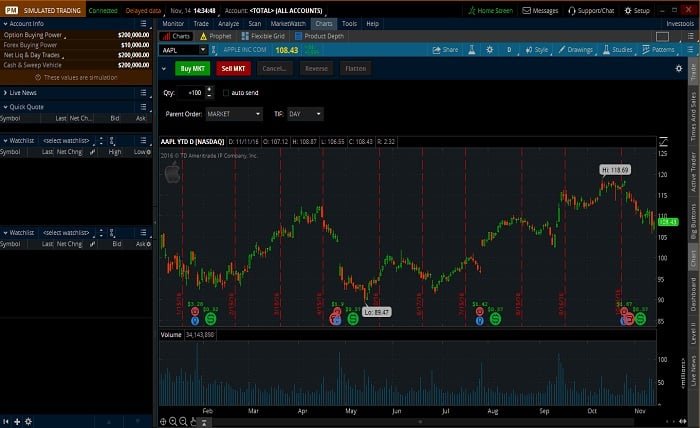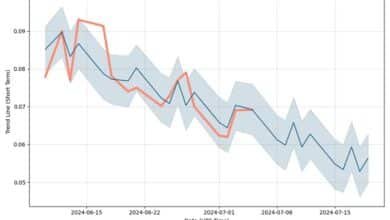Mastering thinkorswim Paper Trading: A Comprehensive Guide for Traders

Introduction
thinkorswim paper trading is an essential tool for both novice and experienced traders looking to refine their strategies without risking real money. This powerful platform, offered by TD Ameritrade, allows users to practice trading with virtual funds, gaining valuable experience and confidence. This comprehensive guide will delve into the various aspects of thinkorswim paper trading, including its features, benefits, setup process, strategies, and tips for success. Whether you’re just starting or looking to hone your skills, this guide will provide valuable insights into thinkorswim paper trading.
What is thinkorswim Paper Trading?
thinkorswim paper trading is a feature provided by TD Ameritrade’s thinkorswim platform that allows users to simulate trading in a risk-free environment using virtual money. This section explains what thinkorswim paper trading is, how it works, and why it’s beneficial for traders. Understanding the basics of thinkorswim paper trading is the first step to mastering this valuable tool.
Benefits of thinkorswim Paper Trading
There are numerous benefits to using thinkorswim paper trading. This section discusses the advantages, such as risk-free practice, the ability to test trading strategies, gaining market experience, and building confidence. Understanding these benefits can help you make the most of thinkorswim paper trading and enhance your trading skills.
Setting Up Your thinkorswim Paper Trading Account
Setting up a thinkorswim paper trading account is a straightforward process. This section provides a step-by-step guide on how to set up your account, including downloading the thinkorswim platform, creating an account, and accessing the paper trading feature. Proper setup ensures you can start practicing trading without any hassle.
Navigating the thinkorswim Paper Trading Platform
Navigating the thinkorswim paper trading platform effectively is crucial for a smooth trading experience. This section explores the platform’s interface, including how to place trades, monitor your portfolio, and use various tools and features. Familiarizing yourself with the platform enhances your efficiency in using thinkorswim paper trading.
Developing Trading Strategies with thinkorswim Paper Trading
Developing and testing trading strategies is a key benefit of thinkorswim paper trading. This section delves into various trading strategies, such as day trading, swing trading, and long-term investing, and how you can use thinkorswim paper trading to refine these strategies. Practicing different approaches helps you find the best strategy for your trading style.
Risk Management in thinkorswim Paper Trading
Risk management is a critical aspect of successful trading. This section discusses how to implement risk management techniques in thinkorswim paper trading, such as setting stop-loss orders, diversifying your portfolio, and managing leverage. Effective risk management ensures you develop sustainable trading habits.
Analyzing Performance in thinkorswim Paper Trading
Analyzing your trading performance is essential for continuous improvement. This section explains how to track and analyze your trades using thinkorswim paper trading’s built-in tools, such as performance metrics, trade history, and analytics. Regular performance analysis helps you identify strengths and areas for improvement.
Transitioning from thinkorswim Paper Trading to Live Trading
Transitioning from thinkorswim paper trading to live trading requires careful planning and preparation. This section provides tips for making a smooth transition, including gradually increasing your risk exposure, starting with small trades, and maintaining the discipline you developed during paper trading. A well-planned transition maximizes your chances of success in live trading.
Common Mistakes to Avoid in thinkorswim Paper Trading
Avoiding common mistakes can significantly enhance your thinkorswim paper trading experience. This section highlights typical errors traders make, such as overtrading, ignoring risk management, and not reviewing performance. Being aware of these mistakes helps you avoid them and improve your trading skills.
Tips for Success in thinkorswim Paper Trading
Excelling in thinkorswim paper trading requires dedication, discipline, and continuous learning. This section offers practical tips for success, such as setting realistic goals, staying updated with market news, seeking feedback, and continuously refining your strategies. Following these tips can help you make the most of thinkorswim paper trading.
Conclusion
thinkorswim paper trading is a powerful tool for developing and refining your trading skills in a risk-free environment. By understanding its features, benefits, and best practices, you can effectively use thinkorswim paper trading to enhance your trading strategies and build confidence. Whether you’re a beginner or an experienced trader, this comprehensive guide provides all the information you need to succeed with thinkorswim paper trading. Embrace the opportunity to practice, learn, and grow as a trader with thinkorswim paper trading.
FAQs
1. What is thinkorswim paper trading? thinkorswim paper trading is a simulated trading feature offered by TD Ameritrade’s thinkorswim platform that allows users to practice trading with virtual money in a risk-free environment.
2. How do I set up a thinkorswim paper trading account? To set up a thinkorswim paper trading account, download the thinkorswim platform, create an account, and access the paper trading feature. Follow the step-by-step setup guide provided in the platform.
3. What are the benefits of using thinkorswim paper trading? The benefits of using thinkorswim paper trading include risk-free practice, the ability to test and refine trading strategies, gaining market experience, and building trading confidence.
4. How can I transition from thinkorswim paper trading to live trading? To transition from thinkorswim paper trading to live trading, gradually increase your risk exposure, start with small trades, and maintain the discipline and strategies you developed during paper trading.
5. What are common mistakes to avoid in thinkorswim paper trading? Common mistakes to avoid in thinkorswim paper trading include overtrading, ignoring risk management, not reviewing performance, and failing to set realistic goals. Being aware of these mistakes helps improve your trading skills.




